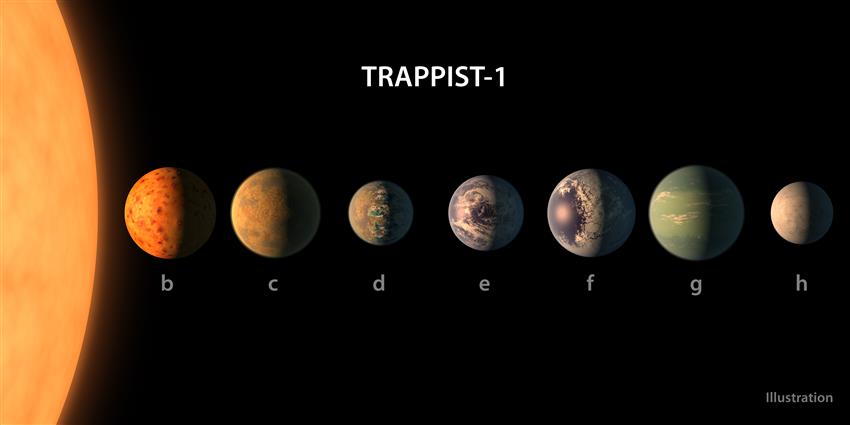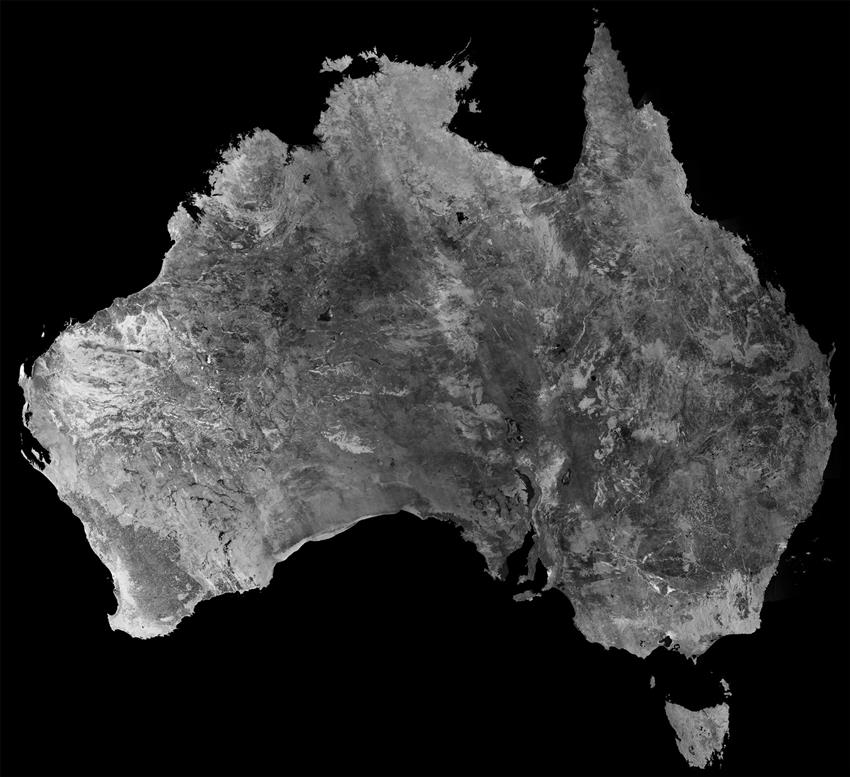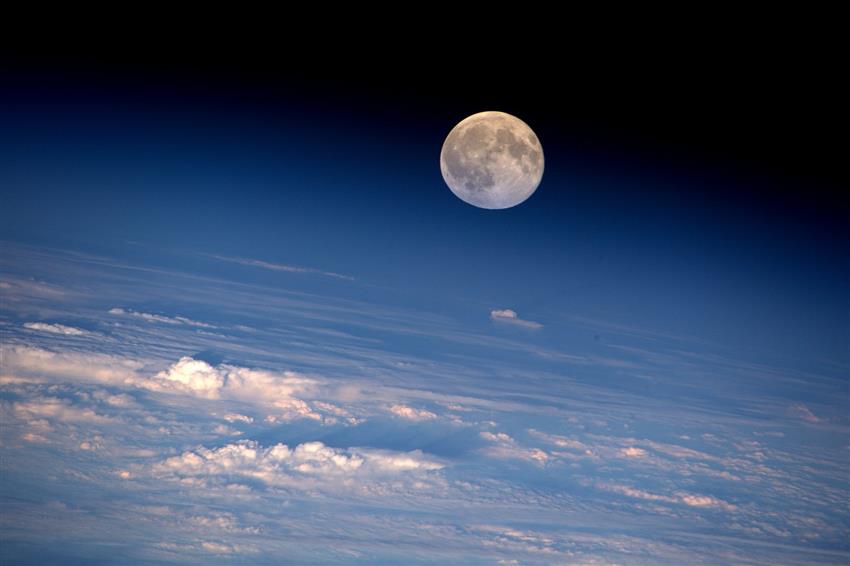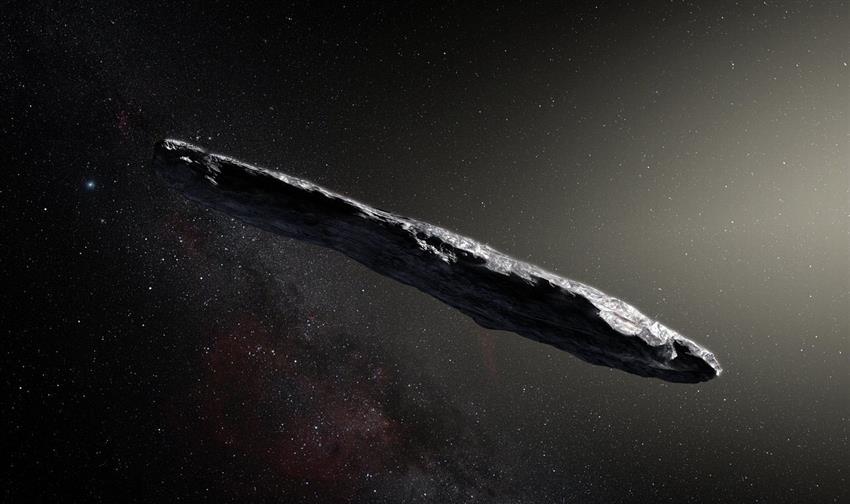in review – 20 highlights for space, science and the CSA

With 2017 coming to an end, now is a good time to look back at some of the year's most notable events and moments related to space, science and the Canadian Space Agency (CSA). Amazing discoveries, achievements and projects made 2017 a great year for space!
January–December 2017 – David Saint-Jacques trains for his 2018 mission to space
Throughout the year, Canadian astronaut David Saint-Jacques continued his two-year specialized training to prepare for his six-month mission aboard the International Space Station (ISS). He is taking customized training on the Soyuz spacecraft, the ISS and its various modules, Canadian and international science experiments, and a variety of mission-specific tasks.
David will launch to the ISS aboard a Soyuz spacecraft in November 2018, making him the first Canadian to go to space since Chris Hadfield returned to Earth in 2013. Expedition 58 will be the first mission for Dr. Saint-Jacques and will mark the 17th space flight for the Canadian astronaut corps.
January–December 2017 – Construction and testing of Canada's RADARSAT Constellation Mission
Canada is currently building and testing the three identical satellites of the RADARSAT Constellation Mission (RCM) in preparation for their scheduled launch in 2018. The RCM is being designed for many Earth observation uses such as climate change monitoring, maritime surveillance and disaster management. Its three-satellite configuration will provide daily revisits of Canada's vast territory and maritime approaches, as well as daily access to 90% of the world's surface.
January 14, 2017 – Dextre successfully completes the most extensive robotics operation ever conducted on the ISS
For the first two weeks of January, ground controllers and astronauts teamed up with Dextre, the Canadian robotic handyman, to improve the ISS's power system. The intensive operation, which lasted a total of 165 hours, consisted in upgrading vital batteries of the ISS that store electrical energy generated by the Station's solar arrays.
Without the proven capabilities of Canadian robotics, the astronauts would have had to execute the entire operation during spacewalks, which are always risky and take a lot of time and resources to prepare. Entrusting Dextre to do most of the work reduced the number of spacewalks from six to two.
February 22, 2017 – Discovery of the largest batch of Earth-size, habitable zone planets
In February, NASA announced the discovery of seven Earth-size planets orbiting a nearby star called TRAPPIST-1, which is located about 40 light-years from Earth.
Under the right atmospheric conditions, the seven planets could have liquid water, a key to life as we know it! Three of them are firmly located in the habitable zone, the area around a star where a rocky planet is most likely to have liquid water. This amazing discovery sets a new record for greatest number of habitable-zone planets found around a single star.
April 27, 2017 – Canada launches the CubeSat project for students
In April, the CSA announced its plan to award 13 grants of about $200,000 to post-secondary institutions as part of a challenge to design, build, launch and operate their own miniature satellites.
The goal of this initiative is to help equip young Canadians with the skills and experience needed for the jobs of today and tomorrow.
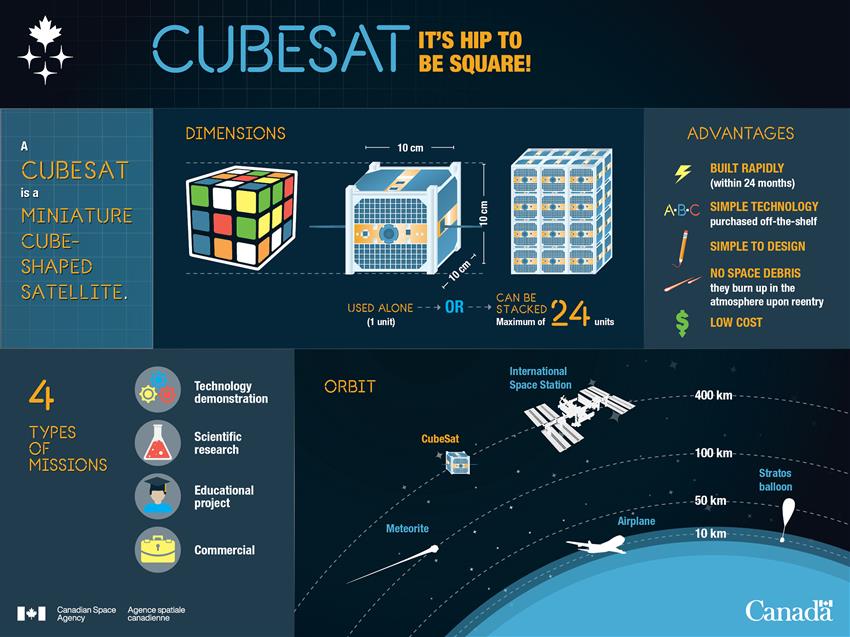
Text version - CubeSat: It's hip to be square! - Illustration
2017-04-12 – CubeSats at a glance. (Credit: CSA)
July 1, 2017 – Canada recruits astronauts for the first time since 2009
After a one-year arduous selection process, Royal Canadian Air Force pilot LCol Joshua Kutryk and University of Cambridge assistant professor Dr. Jennifer Sidey were chosen from 3,772 candidates to represent Canada's new generation of space explorers.
In August 2017, Josh and Jenni relocated to Houston, Texas, to start their two-year astronaut candidate training program at NASA's Johnson Space Center. This basic training includes robotics, flight training, survival training, science classes and learning Russian.
July 11, 2017 – Most powerful telescope ever built undergoes cryogenic testing to get ready for space
From July to November, the James Webb Space Telescope (Webb) went through a 93-day series of tests in an enormous thermal vacuum chamber at NASA's Johnson Space Center. The chamber was set at minus 233 degrees Celsius to see if this powerful telescope could withstand the bitter conditions of space.
Billed as the successor to the famed Hubble Space Telescope, Webb is an international collaboration between NASA, the European Space Agency, and the CSA. It will use infrared light to look back and study every phase in cosmic history, ranging from the first luminous glows after the Big Bang to the evolution of our own solar system. It is scheduled to launch in 2019.

2017-12-01 – Engineers pose by NASA's James Webb Space Telescope shortly after it emerged from Chamber A at NASA's Johnson Space Center in Houston. (Credits: NASA / Chris Gunn)
July 13, 2017 – Former CSA astronaut Julie Payette appointed Governor General of Canada
In July 2017, it was officially announced that former Canadian astronaut Julie Payette would become Canada's 29th Governor General. Her installation took place on October 2, 2017.
In June 1992, Julie was selected to join the Canadian astronaut corps and became the second female Canadian astronaut in history. During her illustrious career as a Canadian astronaut, she went on two space missions, logged over 611 hours in space, became the first Canadian to board the ISS, and was Chief Astronaut of the CSA from 2000 to 2007.
August 21, 2017 – Total solar eclipse
On August 21, a total solar eclipse crossed the entire United States from west to east. Fourteen US states were lucky enough to witness it in its totality, and the other US states and Canada were treated to a partial eclipse.
The next total solar eclipse to be visible in Canada will occur on April 8, 2024, when the path of totality will cross Mexico, the United States and eastern Canada.
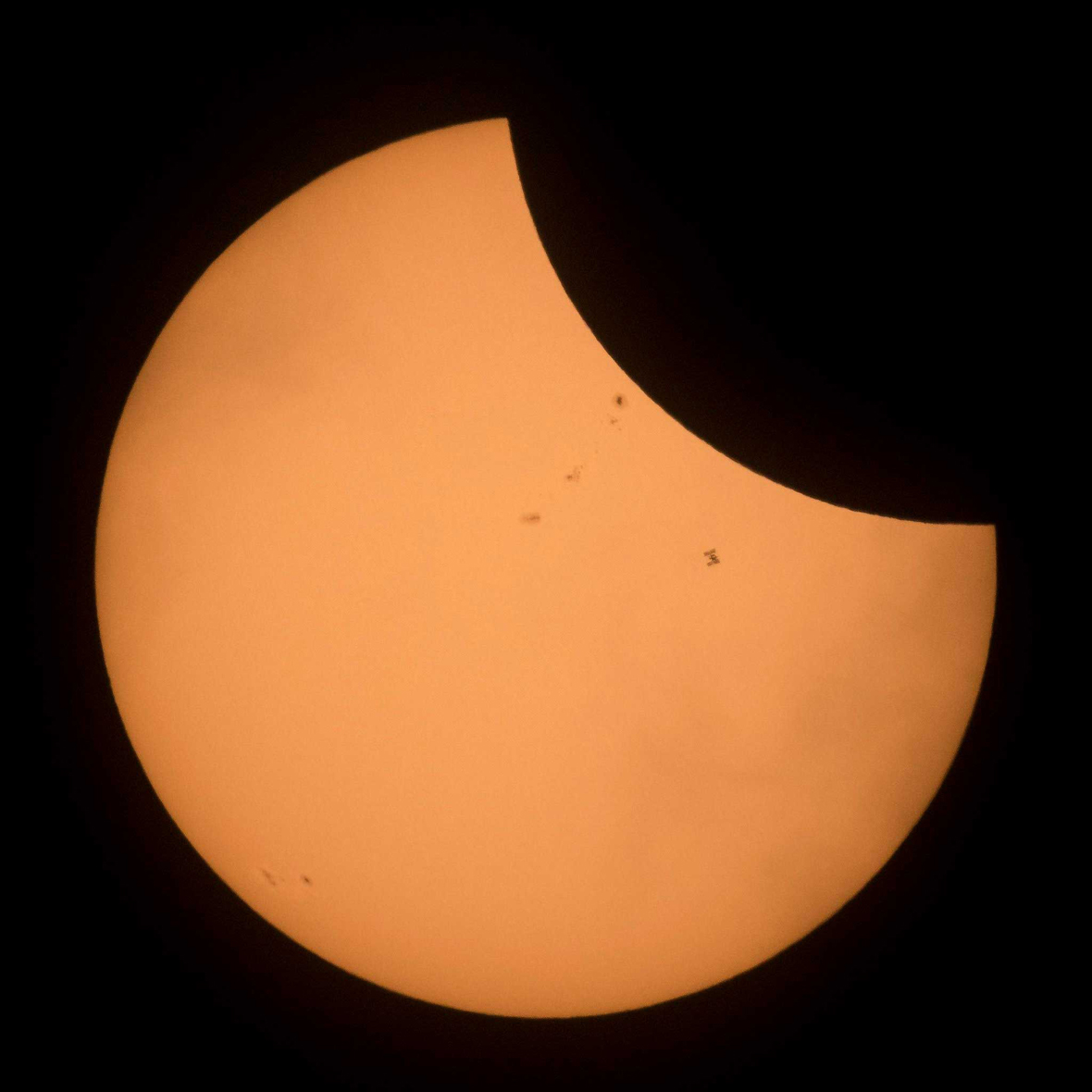
2017-08-21 – The Moon and the ISS pass in front of the Sun during 2017's solar eclipse. (Credit: NASA)
September 15, 2017 – Cassini spacecraft takes final dive into Saturn
On September 15, the 20-year journey of NASA's Cassini mission to Saturn ended as the spacecraft made a planned final plunge into the atmosphere of the gas giant. The legacy of this incredible mission will live on as scientists continue to analyze data gathered about Saturn and its moons.

2008-12-30 – This captivating natural colour view of Saturn was created from images collected shortly after Cassini began its extended Equinox Mission in 2008. (Credit: NASA)
September 22, 2017 – OSIRIS-REx spacecraft successfully performs an Earth Gravity Assist manoeuvre
A year after its launch, the OSIRIS-REx spacecraft successfully performed an Earth Gravity Assist manoeuvre to change its orbit and help put it on course to reach asteroid Bennu in 2018.
The mission consists in returning a sample from asteroid Bennu to Earth and will help answer fundamental questions about how our solar system formed, how life began and how we can avoid asteroid impacts with Earth.
CSA scientist Tim Haltigin explains what a gravity assist consists of and how NASA's OSIRIS-REx spacecraft used it to put itself on course to Bennu. (Credit: CSA)
September 26, 2017 – Australia announces its plan to establish a national space agency
On September 26, Australia announced its plan to establish its own national space agency. A new ally joins the human quest for space exploration!
September 27, 2017 – NASA and Roscosmos announce collaboration for future of human space exploration
On September 27, NASA signed a joint statement with Roscosmos, the Russian space agency, which reflects their shared vision for the future of human exploration. This vision is the Deep Space Gateway project, which consists of a space station orbiting the Moon that will help humanity reach further parts of space, one of the main objectives being Mars.
Both agencies, as well as other ISS partners, see the gateway as a strategic component of human space exploration architecture.
September 28, 2017 – Canada announces its plan to participate in space exploration beyond the ISS
Soon after NASA and Roscosmos announced their collaboration plans for the deep space gateway, the CSA announced its intention to take part in the international plan to explore the Moon and Mars. For the occasion, the CSA asked Canadians for ideas of ways Canada could participate in the future of space exploration.
October 5, 2017 – Canadarm2 gets a new hand
After 16 years of tireless work on board the ISS, one of Canadarm2's "hands," or Latching End Effectors (LEEs), was replaced as a result of normal wear and tear. The CSA and NASA decided to replace the LEE to ensure that the robotic arm could continue performing critical operations for the Station, including maintenance tasks and catching supply ships.
The replacement was done by NASA astronauts Randy Bresnik, Mark Vande Hei and Joe Acaba during a series of spacewalks.
October 10, 2017 – Peggy Whitson becomes NASA astronaut with the most cumulative days in space
On October 10, 2007, NASA astronaut Peggy Whitson became the first female commander of the ISS. Ten years later, she repeated the achievement and also broke the American record for the most cumulative days spent in space with 665 days! She also holds the record for most spacewalks by a female astronaut.
October 16, 2017 – First detection of light tied to a gravitational-wave event
For the first time ever, scientists detected light tied to a gravitational-wave event this year! This was the result of two merging neutron stars in the galaxy NGC 4993, located about 130 million light-years from Earth.
This news is even more impressive when we consider that the first detection of gravitational waves was announced only last year, in February 2016.
2017-10-16 – This animation shows how the two neutron stars merged, resulting in gravitational waves and a blast of light. (Credit: NASA's Goddard Space Flight Center / CI Lab)
November 21, 2017 – First ever interstellar asteroid discovered in our solar system
For the first time in history, astronomers discovered the presence of an asteroid from another star system in our solar system! The interstellar object, named 'Oumuamua, is shaped unlike anything we've ever seen and is the first proof that celestial bodies unattached to any star system exist. This amazing discovery will help us find out more about the origins of our galaxy.
November 29, 2017 – Announcement of new Canadian science experiments aboard the ISS
This year, Canada announced new health science experiments and biotechnological devices to better understand risks associated with human space flight and help find countermeasures and treatments. These findings will be crucial to make space travel safer as international space agencies explore increasingly distant destinations.
They will also be beneficial for life on Earth, as some of the health problems associated with space flight are similar to problems linked to aging, sedentary lifestyle and living in isolated environments.
Why do we do science in space? (Credit: CSA)
December 14, 2017 – 10-year anniversary of RADARSAT-2
Launched in December 2007, Canada's Earth observation satellite has now been active for 10 years! During those 10 years, radar imagery from RADARSAT-2 has been used to monitor the impacts of climate change, protect our environment, manage resources and support disaster relief.
Scheduled for launch in 2018, the RADARSAT Constellation Mission will be the next step for the RADARSAT program.
RADARSAT-2: Keeping an eye on Earth. (Credit: CSA)
Explore further
- 2016 in review - 15 highlights for space, science and the CSA!
- 2015 Year in Review – 8 Highlights for Space, Science and the CSA
- Date modified:



